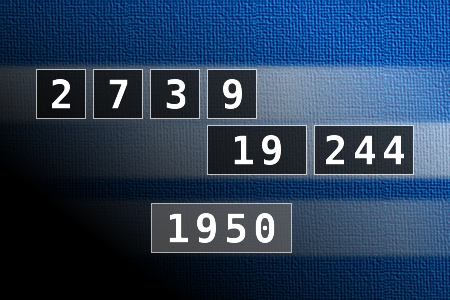Calculate the number 1950
NUMBERMANIA: Calculate the number 1950 using numbers [2, 7, 3, 9, 19, 244] and basic arithmetic operations (+, -, *, /). Each of the numbers can be used only once.Correct answers: 16
The first user who solved this task is Djordje Timotijevic.
#brainteasers #math #numbermania

Five Rules For Men
Five Rules For Men To Follow To a Happy Life:
1. It's important to have a woman, who helps at home,* * who cooks from time to time, cleans up and has a job.
2. It's important to have a woman, who can make you* * laugh.
3. It's important to have a woman, who you can trust* * and who doesn't lie to you.
4. It's important to have a woman, who is good in bed* * and who likes to be with you.
5. It's very, very important that these four women* * do not know each other.*
1. It's important to have a woman, who helps at home,* * who cooks from time to time, cleans up and has a job.
2. It's important to have a woman, who can make you* * laugh.
3. It's important to have a woman, who you can trust* * and who doesn't lie to you.
4. It's important to have a woman, who is good in bed* * and who likes to be with you.
5. It's very, very important that these four women* * do not know each other.*

